
Full disclosure: I’ve never driven a 'soft-roader' SUV in my life.
I’ve spent my personal and professional life driving four-wheel-drives, and four-wheel-drives alone. Yet, I’ve always been curious to see just how far you can take an SUV off-road. Can the lack of low-range gearing and diff locks be overcome with clever traction control systems and modern technology?
The opportunity to conduct this experiment presented itself when we found ourselves with a Mitsubishi Pajero Sport and Mitsubishi Outlander in our test fleet at the same time.
The only logical thing to do was to grab a photographer to document the occasion as well as new Wheels Media teammate John Law, and head for the hills with both vehicles. Here’s my summary of how the two performed off-road - spoiler alert, the results probably won’t surprise you…
(Psst, when you're done here, get into John's on-road comparison.)
JUMP AHEAD
The basics
| Outlander | Pajero Sport | |
|---|---|---|
| Power & torque | 135kW / 245Nm | 133kW / 430Nm |
| Gearbox | CVT auto | 8-speed auto |
| Weight | 1760kg | 2080kg |
| Fuel/tank | 91 RON / 55 litres | Diesel / 68 litres |
| Economy | 9.2L/100km (tested) | 8.8L/100km (tested) |
| Approach angle | 18.3º | 30º |
| Departure angle | 22.2º | 24º |
| Ground clearance | 210mm | 218mm |
| Weight | 1760kg | 2080kg |
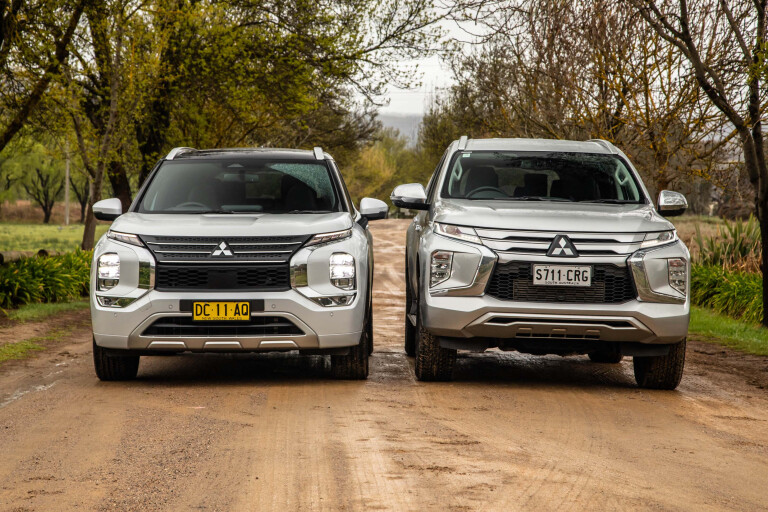
Mitsubishi Outlander off-road
Straight up, the ground clearance – in particular the approach angle of the Outlander – is what will catch you out first.
Even on mild tracks to get to tougher sections, I had to drive at a snail’s pace to avoid damaging the front end of the Outlander.
Next, the suspension isn’t suited to corrugated dirt roads as it simply doesn’t offer enough suspension travel to absorb bumps in a controlled manner; it also rides quite firm.
Speaking of suspension travel, there’s not much down travel in particular, with the Outlander picking up a wheel without effort. In some ways it was fun as even simple obstacles required a bit of thought on how to best attack them.
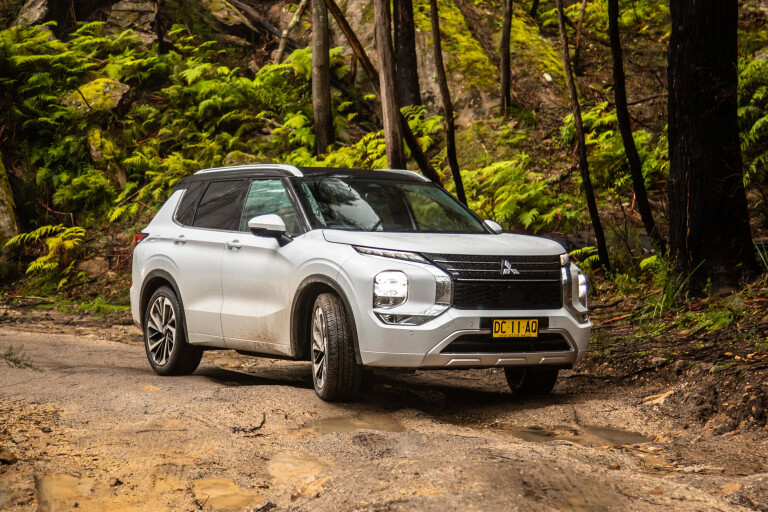
It’s clear to see this also offers a sportier ride on-road compared to the Pajero Sport, which is softly sprung in comparison. Which ride you prefer will be up to your individual taste, but for me I prefer a softer ride especially on poorly maintained roads and on the dirt.
Hill Descent Control in the Outlander is not terribly effective; you can hear it working but it’s no match for the low-range reduction gearing found in the Pajero Sport. Off-road traction control modes seem to mainly alter throttle response, as they are all loose-traction surfaces ie gravel mud sand and snow. It’s nice to see they are there, though, and will provide a confidence boost to those new to off-road driving.
In terms of positives, the turning circle of the Mitsubishi Outlander is fantastic, which makes picking a suitable line off-road much easier. Braking feel is also first rate, as is the interior design which I really liked.

Pajero Sport off-road
The Pajero Sport is a little tractor when it comes to off-road work, with excellent low-range gearing reduction.
While the traction control system isn’t class leading, it proved effective on our test drive, as well as the inclusion of a rear differential lock that boosts off-road capability significantly.
Ground clearance on the front end is a limiting factor with the Pajero Sport, however it is nice to see the front is protected by factory fitted bask plates, which took impacts in their stride.
Rear suspension travel is decent thanks to the solid rear axle and coil springs, however the front end felt like it offered significantly less wheel travel, with a more road-biased suspension tune. It's a compromise many people will be happy with, as this is a vehicle that is suited to daily duties as well as being an adventure machine.
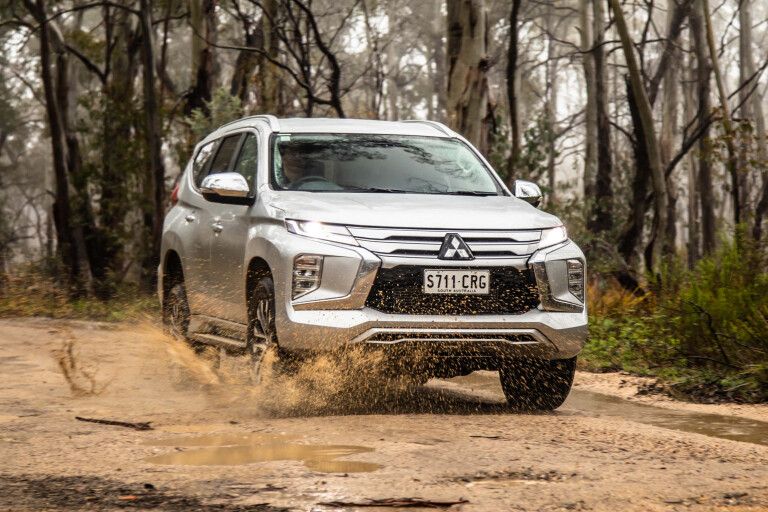
The 2.4L turbo-diesel engine found in the Pajero Sport is lumpy at idle (well, it’s a diesel, after all) but very tractable in low-RPM settings. You are able to inch forward in low-range four-wheel drive with plenty of control.
We found ourselves in one particular spot where the front wheel of the Pajero Sport lifted ridiculously high, but the vehicle just kept climbing, easily making its way to the top of the track, with the only issue being a slight tap on the front bumper.
In comparison, the Outlander couldn’t make it to the summit – spinning opposing wheels while the traction control system cut power to the vehicle without making forward progress.
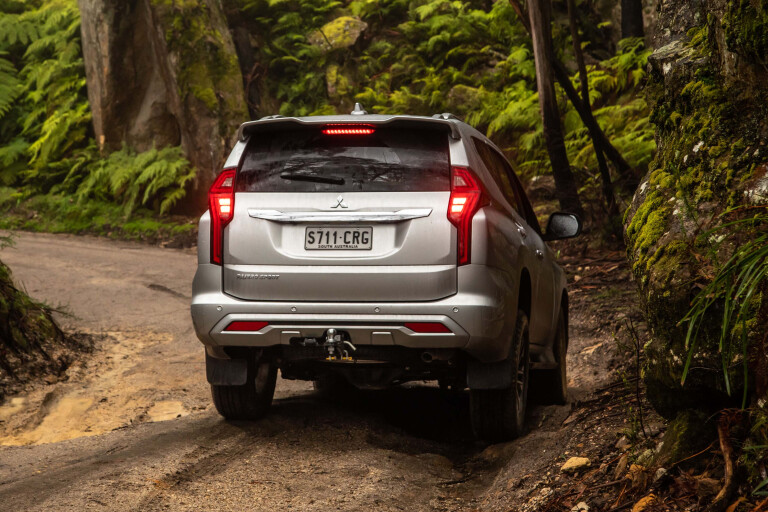
VERDICT: Off-road conclusion
It’s an easy call for me to make – and it was a foregone conclusion, really – because I will use the additional capability of the Pajero Sport off-road. It is a much more capable vehicle than the Outlander.
But who is the Outlander for? Who should buy it?
I see it as being a vehicle to drive to the snow once a year and, of course, use as a family vehicle during the week. Mild dirt road driving is definitely in its wheelhouse, so if you want to go camping in a National Park, it should be up for it – if you take it easy.
I wouldn’t want to take it on soft sand, though, as it just doesn’t have the ground clearance.
Basically, if you are ever planning on heading to, say, Fraser Island, buy the Pajero Sport. If you are only planning on a snow trip or run through a dirt road to get to a nice camping spot, have a spin of the Outlander.
For me, the Pajero Sort is a much more versatile vehicle, and is the one I’d be spending my money on. But I'm glad I can now say I've tried a contemporary SUV.
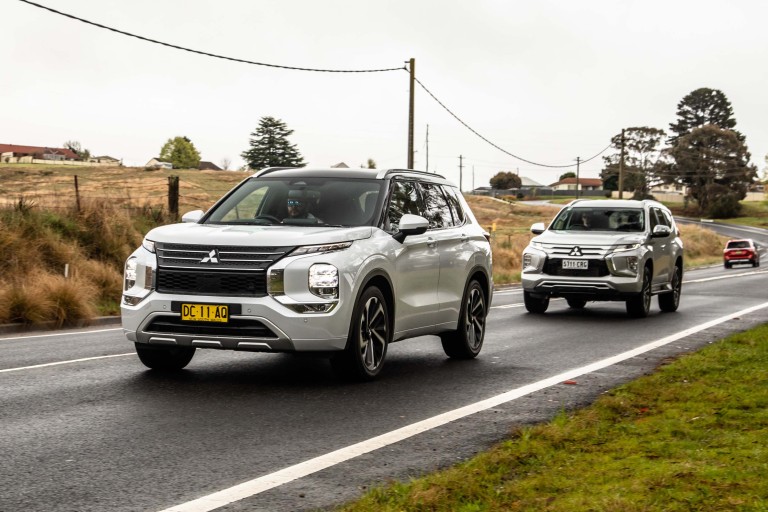



COMMENTS